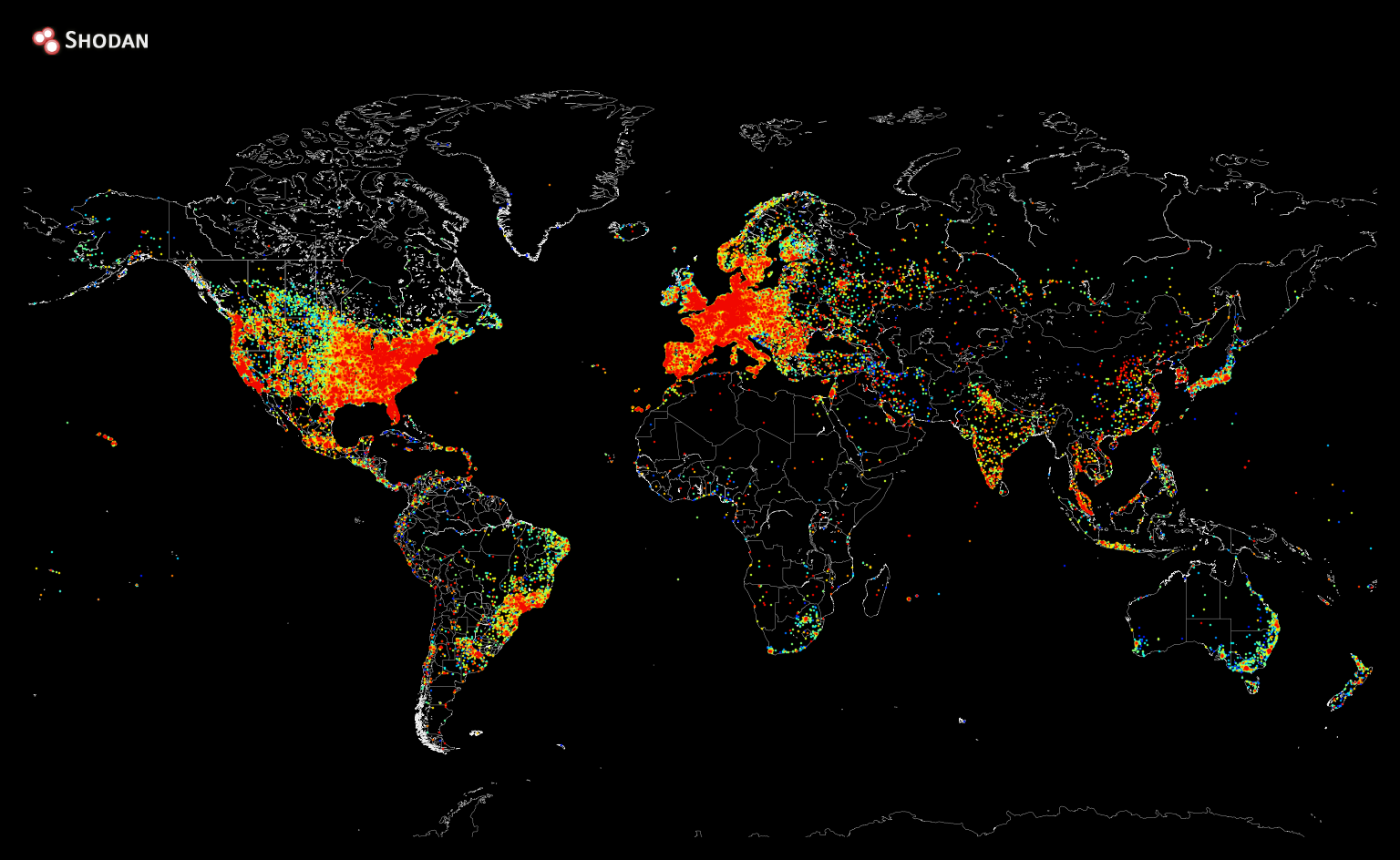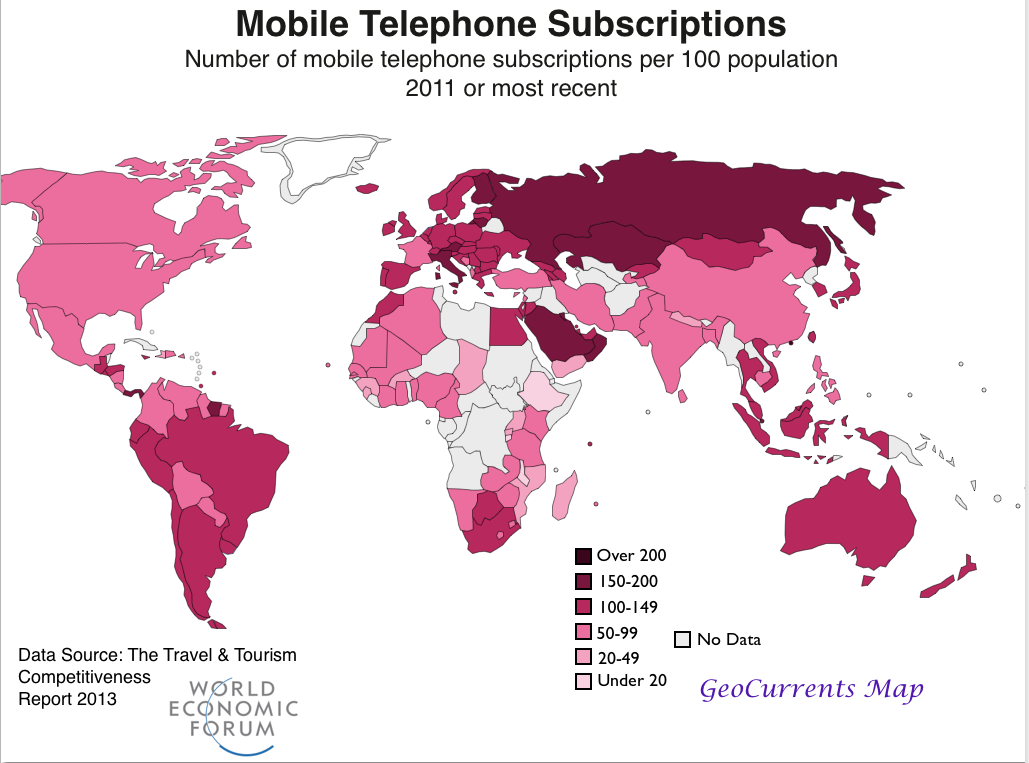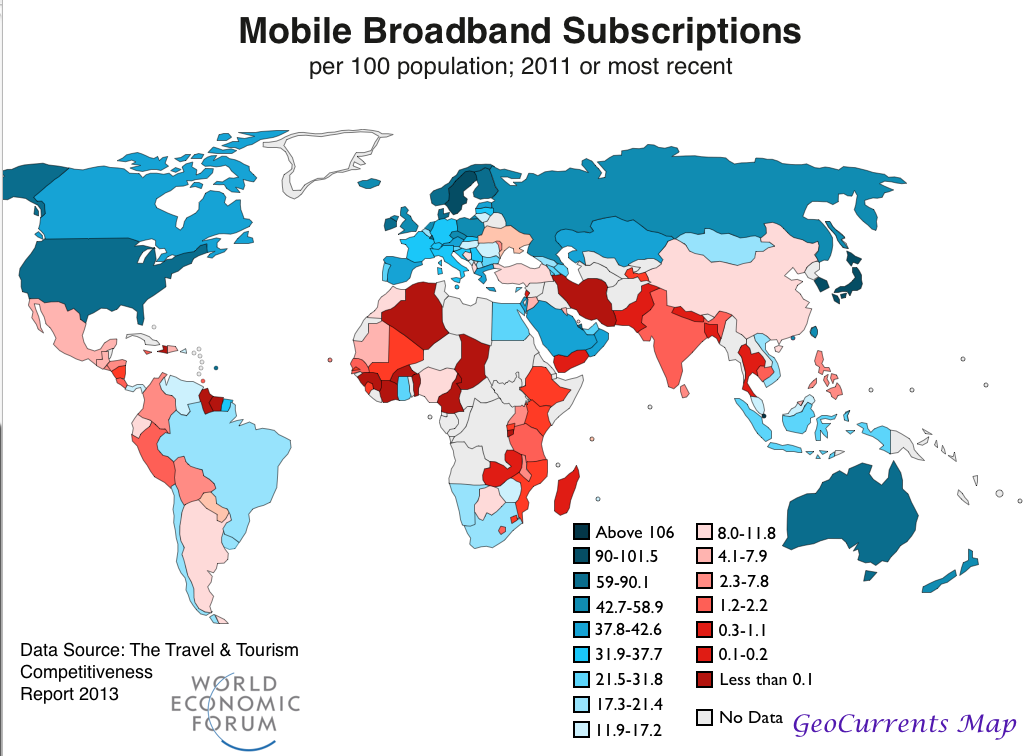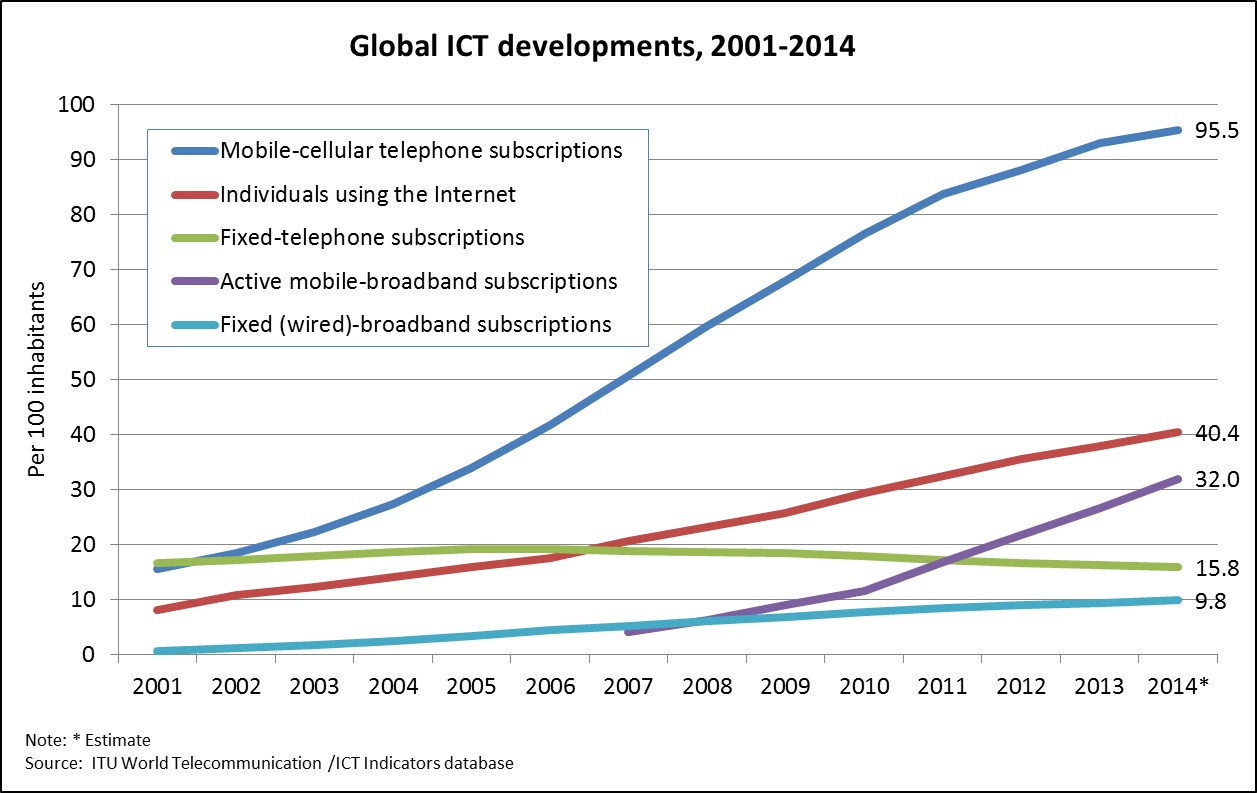- Lack of internet access limits economic development, rapid and effective communication, and the ability of people to put their local situation in a broader context.
- Globally, a country’s percentage of internet users ranges widely, from 1.2% in Myanmar to 96.5% in Iceland, whereas mobile phones are common everywhere, even in the poorest countries.
- With their escalation in both number and capability, mobile phones may become an alternative medium for many new data collection and communication innovations.
How many times have you connected to the Internet today? If you are reading this on your own device, it was probably many.

This is not the case for much of the world, as shown in a 2014 compilation of active Internet Protocol (IP) addresses around the world. An IP address is like an identity card unique to a particular device – such as a computer, tablet, mobile phone, or even a gaming system – that is connected to the Internet.
This map shows the locations of all devices in the world connected to the Internet. It was generated by web cartographer John Matherly last August by sending pings (which are requests for an echo response) to every IP address on the Internet. He plotted the locations of all positive responses on the map below.
The areas in red have more connected devices, and the areas in black lack connected devices completely, so they are literally in the dark in terms of the vast amounts of knowledge available online.

The extreme concentration of connected devices reflects the disparity in technology available to and being used by people in different places. The lack of Internet access limits economic development, rapid and effective communication, and the ability of people to explore the rest of the world and put their local situation in a broader context.
You can view the same information, categorized by country, in this interactive map. The number of IP addresses (devices) that exist per person in various countries gives a sense of each country’s capacity to participate in and benefit from the information economy.
In the US, for example, there exist five IP addresses per person, and in South Korea, there are two. Russia, on the other hand, has one device for every two people, and China has one for every four. Apparently, North Korea has one IP address for every 24,000 people, effectively preventing the spread of information, understanding, and advancement.
To see how the number of IP addresses relates to Internet use, have a look at this interactive map of the numbers and percentages of Internet users by country (ranges from 1.2% Myanmar to 96.5% in Iceland), from the Internet Society’s Global Internet Report for 2014.
Mobile revolution
Mobile phone use, on the other hand, is common nearly everywhere, even in the poorest countries.

According to the World Economic Forum’s 2013 Travel and Tourism Competitiveness Report, Mali and Zimbabwe have 68 and 72 subscriptions, respectively, per 100 people. Only Burundi and Ethiopia have phone subscription rates below 25 percent (several countries remain unmapped).
In fact, while mobile phone use in Asia and Africa still lags behind more developed regions, these are among the world’s largest mobile markets, due in part to the use of multiple SIM cards by many African phone users.
The situation is quite different in regard to mobile broadband subscriptions, as can be seen in the second map. Here subscription rates range from negligible (fewer than 0.1 per 100 people) across most of Africa and South Asia to a high of 114 in Singapore.

Below is a graph showing the average global growth of all of these developments. With their escalation in both number and capability, mobile phones may become the substrate of choice for many new data collection and communication innovations. Community leaders and residents who are armed with mobile technology to gather, communicate, and receive information are better informed and can collaborate more effectively with efforts to meet conservation challenges.
